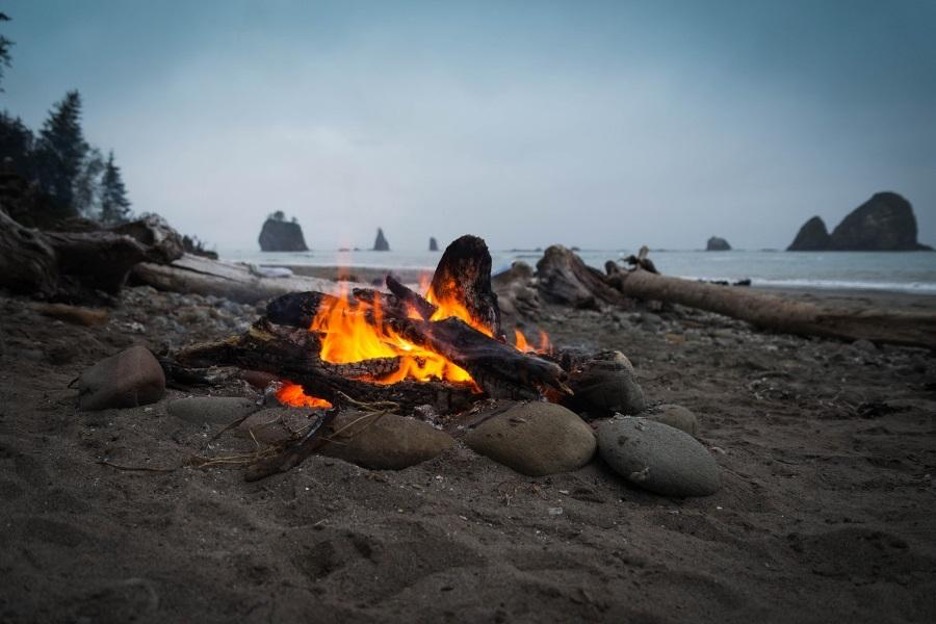
During the two years of the pandemic, the U.S. has experienced an unprecedented rise in outdoor activities, such as running, hiking, kayaking, cycling, and, of course, camping. Thus, according to the survey by Kampgrounds of America, in 2020, nearly 48 million households went camping, and 10 million were beginners. This trend persisted in 2021 as well. So, considering the immense number of new campers, we saw fit to prepare top rules for safe and ethical camping.
We won’t touch upon rules for camping on the equipped campsite. These are generally related to etiquette – respect local regulations, keep your spot clean, watch your pets, respect quiet hours, put out your fire when not around, and so on.
Instead, we’d like to share rules for wild camping because this type of camping is growing popular and can be dangerous.

Wild Camping in the U.S.
Many adventurous people seeking close communication with nature find spending a couple of nights in sticky facilities in close quarters with people they don’t know tiresome and generally not worth paying for. If you’re this kind of person, remember that you have to settle for this. Go wild camping.
In the U.S., wild camping, also known as freedom camping or dispersed camping, is legal and free, but you need to know the places. According to the laws, you can sleep in your vehicle within any federally designated lands, which include National Forests and Grasslands, lands belonging to the Bureau of Land Management (BLM), Wildlife Management Areas (WMA), and some County Parks and City Parks.
Private lands are also an option, but you need an owner’s agreement.
Now, what rules for wild camping in National Forests, BLM, or WMA you must follow to spend your days in the wilderness safely and responsibly.
National Forest Camping Rules
1. Be Prepared
Preparation is the key to a comfortable, safe, and predictable wilderness adventure. Preparation includes packing all the necessary camping and survival gear and learning about the lands you plan to visit.
We all know camping essentials – warm layers, a couple of wool socks, proper footwear, bug spray, and so on. Well, multi-day wild camping requires the same with a few extras, such as a portable and lightweight cooking system consisting of a cooking stove and cookware (mug, knife, spork), firesteel, first aid kit, mini shovel (for nature’s calls), paper maps (in addition to your digital maps), and a compass.
Your survival gear must include a water filter or at least water-purification tablets to treat water from natural sources. The tables are compact and cheap but give water a strong taste. On the other hand, the filter is more convenient to use and more cost-effective if you plan to camp a lot.

Since certain parts of America host bears, you must have bear spray. Several companies making bear-defense equipment also provide bear-proof canisters for storing scented items, as well as lightweight electric fences.
Reading about the flora and fauna of the land of your destination won’t go amiss too.
2. Check Whether Parking is Allowed
With a campervan, you can sleep with comfort wherever you want, within permitted limits, and travel long distances. However, there’s one drawback. It’s limited access to certain spots because of parking restrictions. Therefore you should be vigilant about where to park and always check the status of your location beforehand.
Also, remember that parking on the side of the road or near it is illegal.
3. Leave It the Way You Found It
To put it otherwise, leave no trace. You’re a guest in the realm of Nature, so respect its hospitality. Before abandoning your spot, collect all your rubbish, toilet paper, and food into a trash bag. We understand that it’s impossible to leave no trace at all. Your vehicle or tent will crush grass and plants, and creating a fire pit will require you to damage the soil. But you should try to minimize your impact to leave everything as it was before you came.
4. Limit Noise and Light Pollution
Again, you’re a guest, and there are birds and animals around you. Imagine some guy bursting into your home, dazzling you with a torch, and having his speaker at full blast. Don’t be like that guy to the surrounding fauna. Respect all living beings and don’t disturb their sleep. Instead, use lowlights and play acoustic instruments if your heart pines for music.

5. Enclose and Put Out the Fire
Forest fires are part of nature, but humans’ stupidity and irresponsibility mustn’t augment them. Make a fire circle out of rocks to build a barrier for sparks and generally put the fire under control. Also, mind snakes when collecting materials for your fire pit. Before picking the rock up, give it a tap or poke it with a stick.
Every time you leave your spot, put the fire out by dousing it with water and spreading coals out.
6. Base In a Safe Area
Before pitching a tent or preparing your RV for the overnight stop, inspect your potential camping area. When in a desert, check rocks for signs of rolling. Such signs mean the area is exposed to flash floods. Watch out for dead branches that could fall in the strong wind, dripping trees, and isolated trees that could attract lightning. Avoid swampy areas, animal playgrounds, and avalanche areas.
7. Check Permits and Restrictions
Fines can spoil all the fun. Though wild camping in the public domain is tolerated, you should check whether your destination requires any permits by looking at information on the web, checking information signs, or asking a ranger. Also, contact the local Forest Service office to see if any restrictions are in place, particularly the fire restrictions prohibiting campfires and open stoves, time limits, and ground tent restrictions.


